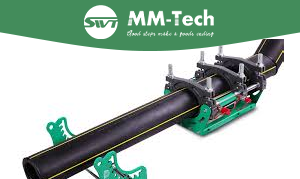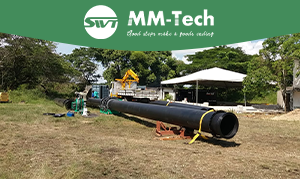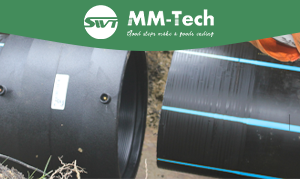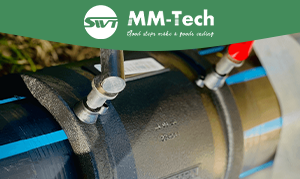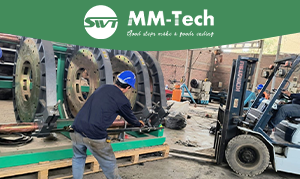
A suspending butt fusion welding machine is very important. It helps make strong, accurate joints needed in the semiconductor field. To get the best results, follow key steps. These include cleaning surfaces, setting welding controls, and testing joints safely. This ensures good quality work and easy tracking for checks.
Key Takeaways
Make sure your workspace is clean, airy, and roomy. This keeps welding safe and high-quality.
Check the welding machine for any damage and proper grounding. Taking care of the machine makes it last longer and work better.
Pick the right materials and settings for welding. Using the correct plastic and setting the right temperature makes strong, accurate welds.
Pre-Operation Setup for Engineering Success
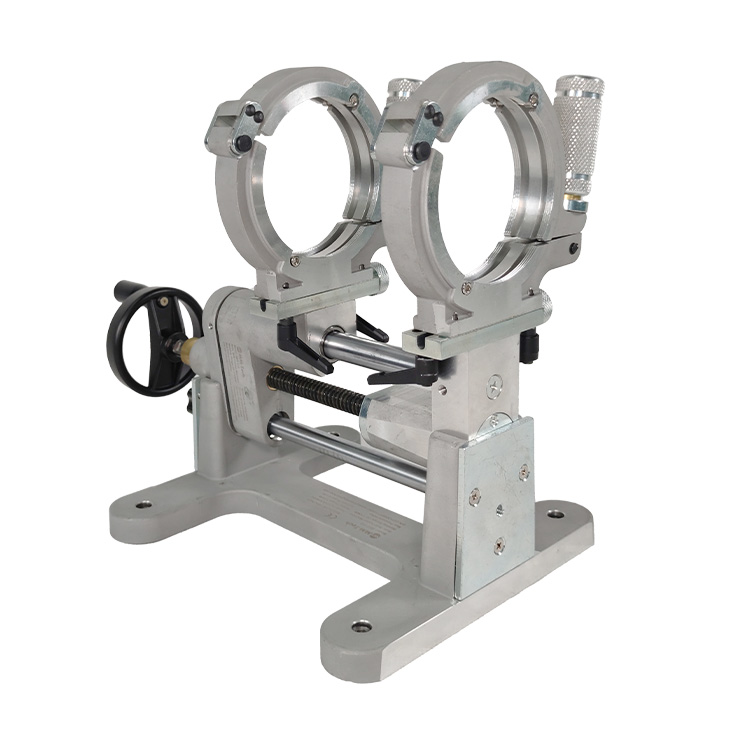
Preparing the Workspace for Semiconductor Applications
Setting up the workspace is key for good welding results. Make sure the area is big, at least 40 m². Ventilation is important to clear harmful fumes from welding. Use exhaust systems to keep the air clean and safe. Operators need training to use the equipment properly and safely.
Keep the workspace clean to avoid contamination. Check the equipment often for damage or problems. Ensure the machine is grounded to prevent electrical issues. Clean the workpiece before welding to remove dirt or debris. These steps improve weld quality and meet industry rules.
Guideline | Description |
|---|---|
Environmental Safety | Keep the area clean to meet semiconductor standards. |
Operational Safety | Train workers to use machines safely and reduce risks. |
Equipment Inspection | Look for damage and check if machines work well. |
Workpiece Preparation | Clean the workpiece to make strong and reliable welds. |
Inspecting the Machine and Components for Optimal Performance
Checking the welding machine is important for good results. Look for any visible damage on the machine parts. Make sure the machine is grounded to avoid electrical dangers. Use tests like mechanical checks to find problems without harming the machine. For deeper checks, use tensile or bend tests to see how strong the weld is.
Take care of the machine regularly. Lubricate moving parts and clean it to stop dirt buildup. These steps make the machine safer and last longer. This helps it work well for semiconductor research and manufacturing.
Selecting Materials and Settings for Technology Innovation
Picking the right materials and settings is very important. Use materials like PE, PVDF, or PP for strong and precise welds. Modern machines, like the SBT-110, have smart features for easy adjustments. These features help reduce mistakes and improve accuracy.
Try green welding methods to cut waste and protect the environment. Use advanced tools and robots to make work safer and faster. These ideas help you get great results and meet semiconductor industry needs.
Step-by-Step Operation of a Suspending Butt Fusion Welding Machine
Aligning Materials for Precision Welding
First, line up the materials carefully. This step makes sure the weld is strong and accurate, which is very important in industries like semiconductors. Place the pipes or parts into the machine’s clamps. Tighten the clamps to hold them firmly in place. If the materials are not lined up correctly, the joint can become weak. Double-check the alignment to ensure the ends match perfectly. Use the machine’s alignment tools if they are available to make this easier.
After aligning, check the surfaces for dirt or debris. Dirty surfaces can ruin the weld’s quality. In semiconductor work, even small flaws can cause problems. Taking time to align and clean the materials properly helps create a strong and reliable weld.
Heating the Ends for a Secure Fusion
Next, heat the ends of the materials. The SBT-110 welding machine uses a heating element to prepare the surfaces. Set the machine to the right temperature, between 400°F (204°C) and 450°F (232°C). This range works well for HDPE pipes. Always check the pipe maker’s instructions, as the temperature may change based on material thickness.
When the machine reaches the right heat, press the material ends against the heating element. Hold them there until the surfaces soften and melt slightly. Be careful not to overheat, as this can damage the materials. Proper heating helps create a strong and lasting joint.
Tip: Use a thermometer or the machine’s temperature gauge to check the heat. Keeping the temperature steady is very important for precise work in semiconductor projects.
Fusing Materials Together for Durable Results
After heating, take the materials off the heating element and press them together right away. The SBT-110 machine makes this step simple by helping you apply even pressure. Keep the pressure steady so the melted surfaces bond evenly. Uneven pressure can make the weld weak.
For very precise jobs, you can try advanced methods like Gas Tungsten Arc Welding (GTAW) or Laser Beam Welding (LBW). These methods give better control and accuracy, which is great for important semiconductor tasks. After welding, treatments like stress relief can make the joint stronger by reducing heat-related effects.
Cooling and Final Inspection for Quality Assurance
Let the materials cool naturally while still clamped in the machine. Do not rush this step, as moving the materials too soon can weaken the joint. Once they are fully cooled, release the clamps and check the weld.
Look closely for problems like cracks or uneven spots. For important jobs, use special tests like ultrasonic testing to make sure the weld meets industry standards. Careful inspection ensures the joint is strong and reliable, which is crucial for semiconductor and high-tech work.
Note: Regularly check and adjust your machine to keep it working well. This helps maintain weld quality and makes the machine last longer.
Safety Precautions in High-Tech Welding
Using Personal Protective Equipment (PPE) for Safe Operation
Safety starts with wearing the right PPE. Always wear goggles to protect your eyes from sparks and bright light. Gloves keep your hands safe from burns and cuts. Heat-resistant clothing stops injuries from hot materials. Helmets with auto-darkening filters shield your face and neck from harmful UV rays.
Only 34.2% of welders use PPE all the time, even though it prevents accidents. Common injuries include cuts (38%) and burns (14%), which proper gear can stop. Using PPE regularly, along with training and supervision, lowers risks. Welders who wear goggles (98%) and gloves (65.4%) report fewer injuries. This shows how important safety gear is.
Tip: Check your PPE for damage before welding. Broken gear can’t protect you.
Avoiding Overheating and Material Damage in Research Applications
Controlling heat is key to protecting materials during welding. Adjust the machine’s voltage and current to manage heat levels. Preheat materials to spread heat evenly and avoid damage. Keep a steady speed while welding to prevent overheating.
Watch the weld pool closely and adjust settings as needed. Pulse welding works well for thin or heat-sensitive materials. Use high-quality batteries like AGM or lithium-ion to handle heat better. Maintain batteries and avoid overcharging to reduce overheating risks.
Callout: Overheating can ruin materials and weaken welds. Control heat for the best results in research projects.
Ensuring Proper Ventilation in Advanced Engineering Environments
Good ventilation keeps welding areas safe. Fumes from welding can harm your lungs. Local exhaust ventilation (LEV) systems remove fumes right where they form. These systems work well in small spaces where fumes build up quickly.
Fume extraction systems clean the air and make work safer. Well-maintained LEV systems capture harmful particles effectively. Advanced ventilation tools improve safety in high-tech industries like semiconductors. Investing in good ventilation protects workers and meets safety rules.
Note: Ventilation systems are more than safety tools. They improve health and productivity in engineering and science jobs.
Troubleshooting and Maintenance for Long-Term Reliability
Fixing Common Problems in Semiconductor Welding
Stop welding problems by using simple troubleshooting steps. Porosity happens when gas leaks or hoses are damaged. Check hoses often and use the right nozzle size for the material. Fusion issues occur if the gun angle is wrong or you move too fast. Keep the gun at a 0- to 15-degree angle and slow down for better fusion. Cold lap defects mean the weld isn’t hot enough. Raise the voltage or wire feed speed to add more heat.
Orbital welding is great for semiconductor work. It protects the weld from dirt and air. This method makes very clean welds, which are needed for quality semiconductor parts. Fixing these problems improves welding and meets advanced engineering needs.
Cleaning and Lubricating for Smooth Operation
Clean and lubricate your machine often to keep it working well. Lubrication lowers friction and stops parts from wearing out quickly. Dirt, water, or chemicals can cause damage over time. Cleaning removes debris that might block the machine’s functions.
Pay attention to cleaning the heating element and clamps. This helps with proper alignment and heat transfer. Lubricate moving parts to avoid wear and tear. These steps make the machine last longer and give steady results for semiconductor projects.
Maintenance Tips for Long-Term Use
Good maintenance prevents expensive repairs and delays. Check your machine regularly and replace worn parts early. When buying a welding machine, make sure spare parts and support are easy to get. Companies with good support make maintenance simpler.
Preventive care is key for machines used in important jobs. It keeps them running smoothly and performing well. For long-term use, invest in tools and methods that match modern engineering needs. These tips help your machine handle precise tasks in semiconductor work.
Setting up, using, and maintaining your suspending butt fusion welding machine correctly is important. Prepare the workspace, check parts, and align materials carefully. These steps make welds stronger and more reliable. Taking care of the machine often keeps it working well for research. Safety and accuracy are key for success in semiconductor work. Following these methods helps create strong and lasting welds.
Tip: Always aim for safety and accuracy in high-tech research projects.
FAQ
What materials can the SBT-110 weld?
The SBT-110 can weld PE, PVDF, and PP. These materials make strong and accurate joints for semiconductor and industrial uses.
How should you clean the heating element?
Clean the heating element after each use. Gently remove dirt to keep heat transfer steady and avoid damage later.
Tip: Use a soft cloth that won’t scratch the surface when cleaning.
Can the machine fit different pipe sizes?
Yes, the SBT-110 has reducer inserts. These let you adjust it for pipes between 20mm and 110mm wide.
Note: Check the reducer inserts for damage before starting any project.


